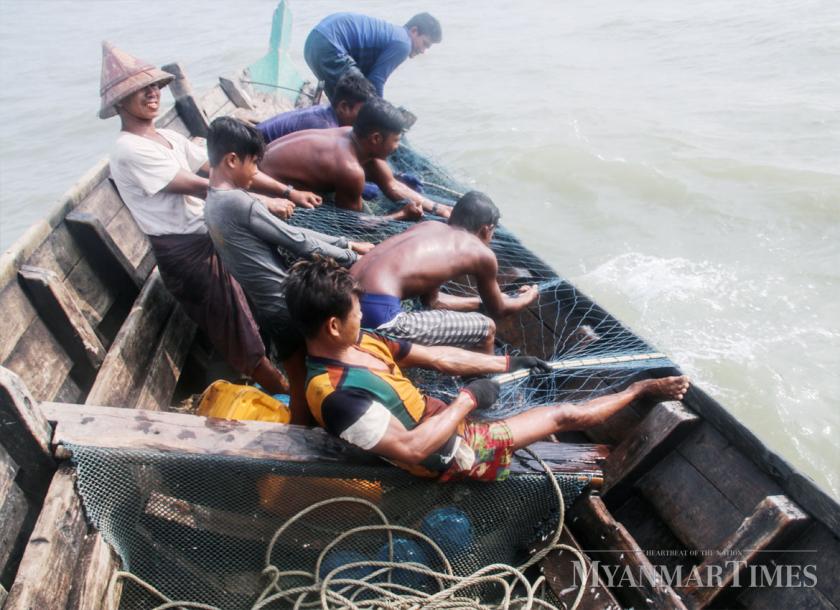Livestock and fisheries sectors in Myanmar need further development along the entire supply chain to link with the global market and promote exports
24 ธันวาคม 2561
The Myanmar livestock and fisheries sectors have not lived up to their potential under the remit of the Ministry of Agriculture, Livestock and Irrigation and needs to be a separate ministry in order to fully grow and develop, said U Zaw Aye Maung, Rakhine ethnic minister in Yangon Regional Government.
“In the past, livestock and fisheries were growing successfully as they were managed separately from agriculture. If we want to develop the fisheries industry, we need it to be under a different ministry with decision makers both at the Union and regional level,” U Zaw Aye Maung said, adding that new legislation is needed to replace the existing outdated rules and regulations for the fisheries sector.
The calls for more leadership and focus on fisheries come as the sector struggles with issues such as lack of finance, transport infrastructure, data and communications and even land for fish farming.
Even though there are plans to establish a 10,000 acre fisheries zone for farming fish in Kungyangon Township in Yangon, for example, progress has been waylaid by delays in obtaining permits to convert land for agriculture into space for fish farms. Ayeyarwady, Mon and Tanintharyi face similar permit issues.
Importantly, the livestock and fisheries sectors hold strong export potential. In 2017-18, Myanmar exported just over 570,000 tonnes of fisheries worth US$712 million, the highest amount in history.
Yet, despite enjoying long coastlines, Myanmar’s fisheries sector still lags behind its neighbours in terms of scale and competitiveness, said Dr Zaw Oo, executive director at the Centre for Economic and Social Development.
“Improvements are also needed along the entire supply chain, such as in fish feed production, water quality management, preventive and curative support against disease, post harvest technology and aquaculture,” he said.
In February, dialogues commenced on the drafting of a National Aquaculture Development Plan (NADP), which will set out long term national objectives to foster the future development of the fisheries sector.
On Tuesday, state and regional consultations for the NADP were held in Yangon. The objective of these consultations is to gather vital feedback from key stakeholders from different states and regions to ensure that as many inputs as possible are heard during the development of the NADP, U Zaw Oo said.
The NADP will focus on upgrading the entire value-chain and linking the Myanmar fisheries sector with global markets.
The drafting process is expected to be completed by February next year, after which it will be submitted to the government and linked to the existing legislation. “Then, we will develop state and regional level working programmes,” U Zaw Oo said.
“If the NADP is successful, it will help the whole sector develop and invite investments from international investors. Currently, the fisheries sector is receiving support mainly from NGOs and other aid organisations,” said U Win Kyaing, Secretary General of Myanmar Fisheries Federation.
The NADP will also be aligned with the objectives of the Myanmar’s Sustainable Development Plan, National Export Strategy, Agriculture Development Strategy and Myanmar Investment Promotion Plan.
(The Myanmar Times: https://www.mmtimes.com/news/fisheries-ministry-needed-sector-development-and-better-exports.html )











